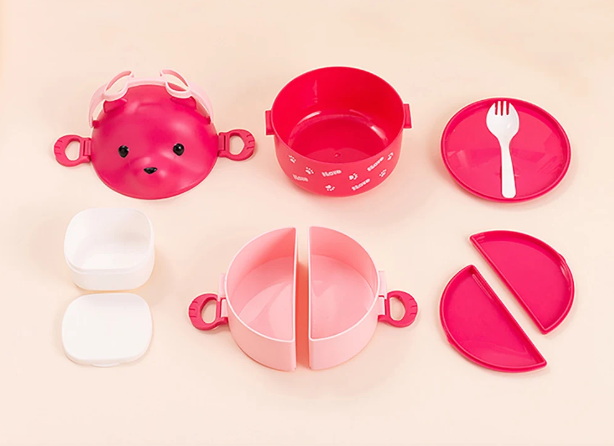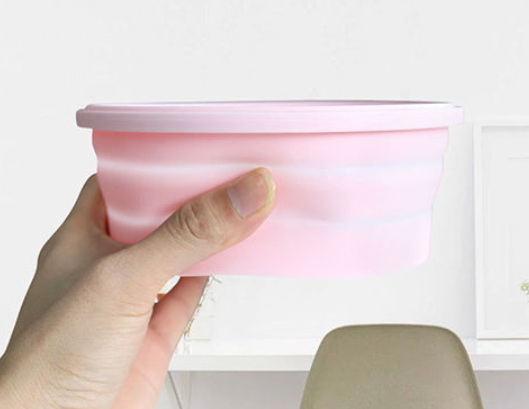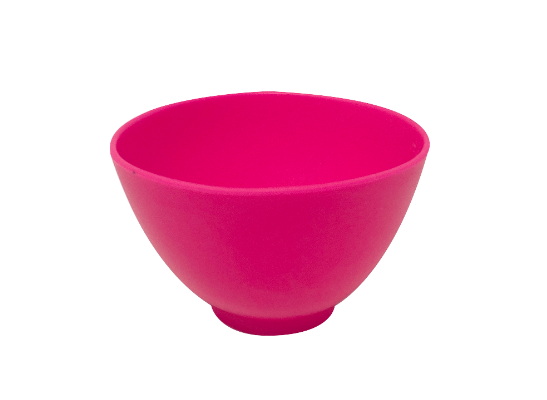
Content Menu
● Introduction to Disposable Pink Bowls
>> Material Properties of Disposable Bowls
>>> Polystyrene (PS) Bowls
>>> Polypropylene (PP) Bowls
>>> Biodegradable Bowls
● Suitability of Disposable Pink Bowls for Hot Beans
>> Alternative Options for Serving Hot Beans
● Exploring Different Types of Disposable Bowls
>> 1. Paper Bowls
>> 2. Bagasse Bowls
>> 3. Bamboo Bowls
>> 4. Aluminum Bowls
>> 5. Foam Bowls
● Environmental Impact of Disposable Bowls
>> Eco-Friendly Alternatives
● Conclusion
● FAQ
>> 1. Can Disposable Pink Bowls Be Microwaved?
>> 2. Are Biodegradable Bowls Suitable for Hot Foods?
>> 3. What Are the Benefits of Using Heat-Resistant Bowls?
>> 4. Can Paper Bowls Hold Hot Soup?
>> 5. Are Polypropylene Bowls Eco-Friendly?
● Citations:
In recent years, the use of disposable bowls has become increasingly popular for both convenience and aesthetics. Among these, disposable pink bowls have caught the eye of many due to their vibrant color and stylish design. However, when it comes to serving hot and saucy beans, the question arises: Can these bowls handle the heat and moisture without compromising their integrity? In this article, we will delve into the world of disposable bowls, focusing on their suitability for serving hot and saucy beans, and explore various types of disposable bowls that might be more suitable for such dishes.

Introduction to Disposable Pink Bowls
Disposable pink bowls, like the ones offered by various manufacturers, are made from heavy-duty, food-grade plastic that is non-toxic and BPA-free. These bowls are designed to be durable and resistant to scratches, making them ideal for serving soups and desserts. However, their suitability for hot and saucy beans requires a closer examination of their material properties.
Material Properties of Disposable Bowls
Disposable bowls are made from various materials, including polystyrene (PS), polypropylene (PP), and biodegradable materials like sugarcane bagasse and paper pulp. Each material has its own set of properties that determine its suitability for hot and saucy foods.
Polystyrene (PS) Bowls
Polystyrene bowls are lightweight, inexpensive, and come in a variety of colors. However, they are not suitable for microwave or oven use and may not be the best choice for hot foods due to potential chemical leaching.
- Pros: Lightweight, inexpensive, good insulation.
- Cons: Not biodegradable, can leach chemicals when heated.
Polypropylene (PP) Bowls
Polypropylene bowls are more heat-resistant than PS and can be used for hot foods. They are a better option for serving beans but may still warp under extreme temperatures.
- Pros: More durable than PS, suitable for hot foods.
- Cons: Still derived from petroleum; not biodegradable.
Biodegradable Bowls
Biodegradable bowls made from materials like sugarcane bagasse or paper pulp offer an eco-friendly alternative. They are suitable for hot foods and can be composted, reducing environmental impact.
- Pros: Compostable, made from renewable resources.
- Cons: May not hold up as well under extreme heat compared to plastic options.
Suitability of Disposable Pink Bowls for Hot Beans
While disposable pink bowls are aesthetically pleasing, their primary material is not specified as being heat-resistant. Therefore, they might not be the best choice for serving hot and saucy beans without risking the bowl's integrity.
Alternative Options for Serving Hot Beans
For serving hot and saucy beans, it's advisable to use bowls that are specifically designed for heat resistance. Ceramic or glass bowls are excellent options as they can withstand high temperatures and are easy to clean.
Exploring Different Types of Disposable Bowls
When considering disposable options for serving hot foods like beans, it's essential to explore various types of disposable bowls available in the market:
1. Paper Bowls
Paper bowls can be a good option if they are specifically designed to handle hot liquids. Many paper bowls come with a special lining that prevents leakage while maintaining structural integrity under heat.
- Ideal Uses: Soups, salads.
- Limitations: Can become soggy with very hot liquids.
2. Bagasse Bowls
Made from sugarcane pulp, bagasse bowls are eco-friendly and can handle high temperatures without warping or leaking. They offer a sturdy option for serving hot beans.
- Ideal Uses: Hot meals, soups.
- Benefits: Fully compostable; strong construction.
3. Bamboo Bowls
Bamboo is another sustainable option that provides durability while being biodegradable. Bamboo bowls can withstand moderate heat but should be monitored when used with very hot foods.
- Ideal Uses: Hot soups or salads.
- Limitations: Not as widely available as plastic options.
4. Aluminum Bowls
Aluminum bowls offer excellent heat conductivity and can be used in ovens or grills. They are perfect for serving greasy or hot foods but should not be microwaved.
- Ideal Uses: Casseroles, baked dishes.
- Limitations: Not biodegradable; more expensive than paper or plastic options.
5. Foam Bowls
Foam bowls provide good insulation properties which help keep soup hot for longer periods. However, they are less environmentally friendly compared to other options like paper or bamboo.
- Ideal Uses: Takeout soups.
- Limitations: Non-biodegradable; often banned in some areas due to environmental concerns.

Environmental Impact of Disposable Bowls
The environmental impact of using disposable bowls cannot be overlooked. Traditional plastic options contribute significantly to landfill waste since they take hundreds of years to decompose. In contrast, biodegradable options like bagasse or bamboo reduce waste through composting processes that return nutrients back to the earth.
Eco-Friendly Alternatives
When choosing disposable products, consider eco-friendly alternatives:
- Compostable Materials: Look for products labeled as compostable; these will break down naturally in a composting environment.
- Recyclable Options: Some plastics can be recycled if disposed of correctly; however, recycling rates remain low globally.
- Reusable Products: If possible, opt for reusable plastic or glass containers that can withstand multiple uses without degrading over time.
Conclusion
Disposable pink bowls may not be the best choice for serving hot and saucy beans due to potential heat sensitivity. For such dishes, it's recommended to use heat-resistant bowls made from materials like ceramic or glass. However, if you're looking for disposable options that can handle the heat effectively while being eco-friendly, consider using biodegradable bowls made from bagasse or bamboo which provide both durability and sustainability.

FAQ
1. Can Disposable Pink Bowls Be Microwaved?
Disposable pink bowls are generally not recommended for microwave use unless specifically stated by the manufacturer. It's safer to avoid microwaving them to prevent any potential damage or chemical release.
2. Are Biodegradable Bowls Suitable for Hot Foods?
Yes, many biodegradable bowls are suitable for hot foods. Materials like sugarcane bagasse and paper pulp can handle moderate temperatures without compromising their structure.
3. What Are the Benefits of Using Heat-Resistant Bowls?
Heat-resistant bowls offer several benefits including the ability to serve hot dishes directly from the oven or microwave without risk of warping or melting, easy cleaning after use, and durability during handling.
4. Can Paper Bowls Hold Hot Soup?
Yes, high-quality paper bowls can hold hot soup if they have a leak-resistant lining; however, they may become soggy with very hot liquids over time.
5. Are Polypropylene Bowls Eco-Friendly?
Polypropylene bowls are not as eco-friendly as biodegradable options but are more durable than traditional plastics; however, they still contribute to long-term plastic waste if not recycled properly.
Citations:
[1] https://www.discountpartysupplies.com.au/fuchsia-pink-reusable-plastic-bowl-11-5cm-pack-of-10-coltwbo18hpi.html
[2] https://www.bioleaderpack.com/types-of-disposable-bowls-exploring-different-materials/
[3] https://www.innaturepack.com/the-best-disposable-soup-bowls-with-lids-for-hot-soup/
[4] https://cibowares.com/collections/disposable-bowls
[5] https://www.sumkoka.com/best-disposable-hot-soup-bowl.html
[6] https://factorydirectparty.com/products/12-oz-hot-pink-plastic-bowls-8-ct
[7] https://diyecobox.com/best-disposable-bowls-for-hot-soup-top-picks/
[8] https://www.biopak.com/hk-ch/containers-lids/bowls
[9] https://www.ecosoulhome.com/blogs/sustainable-living/5-tips-for-choosing-the-best-disposable-bowls-for-hot-soup
[10] https://greenpaperproducts.com/collections/compostable-bowls
[11] https://www.craftecopack.com/blog/6-best-disposable-bowls-for-hot-soup-everything-you-need-to-know_b26
[12] https://smartyhadaparty.com/collections/soup-bowls
[13] https://whhaokelao.en.made-in-china.com/product/WZqfuOTVEgYy/China-Food-Grade-Disposable-High-Quality-Logo-Printed-Pink-Paper-Bowls.html
[14] https://academy.monouso-direct.com/types-of-bowls/
[15] https://www.walmart.com/c/kp/disposable-soup-salad-bowls
[16] https://www.walmart.com/ip/Exquisite-Disposable-Plastic-Bowls-40-Piece-Hot-Pink-Party-Pack-Plastic-Soup-Bowls-12oz-Cerise/231339574
[17] https://www.hydepackage.com/info-detail/advantages-of-using-disposable-cornstarch-bowls
[18] https://www.ebay.co.uk/itm/204392065464
[19] https://www.restaurantware.com/collections/disposable-bowls-food-cups
[20] https://www.enviropack.org.uk/catering-packaging/food-bowls

















